Fertilizing your lawn is an essential part of lawn care. It helps to keep your lawn healthy and green. Understanding when to fertilize your lawn is crucial to ensure your grass is healthy and green.
The best time to fertilize your lawn will depend on the type of grass you have and your climate. Generally, it is recommended to fertilize your lawn during its peak growing season: fall for cool-season grasses and spring for warm-season grasses.
The timing of lawn fertilization depends on several factors, including the type of grass, climate, soil conditions, and the type of fertilizer you use. Keep reading to learn more about these factors.
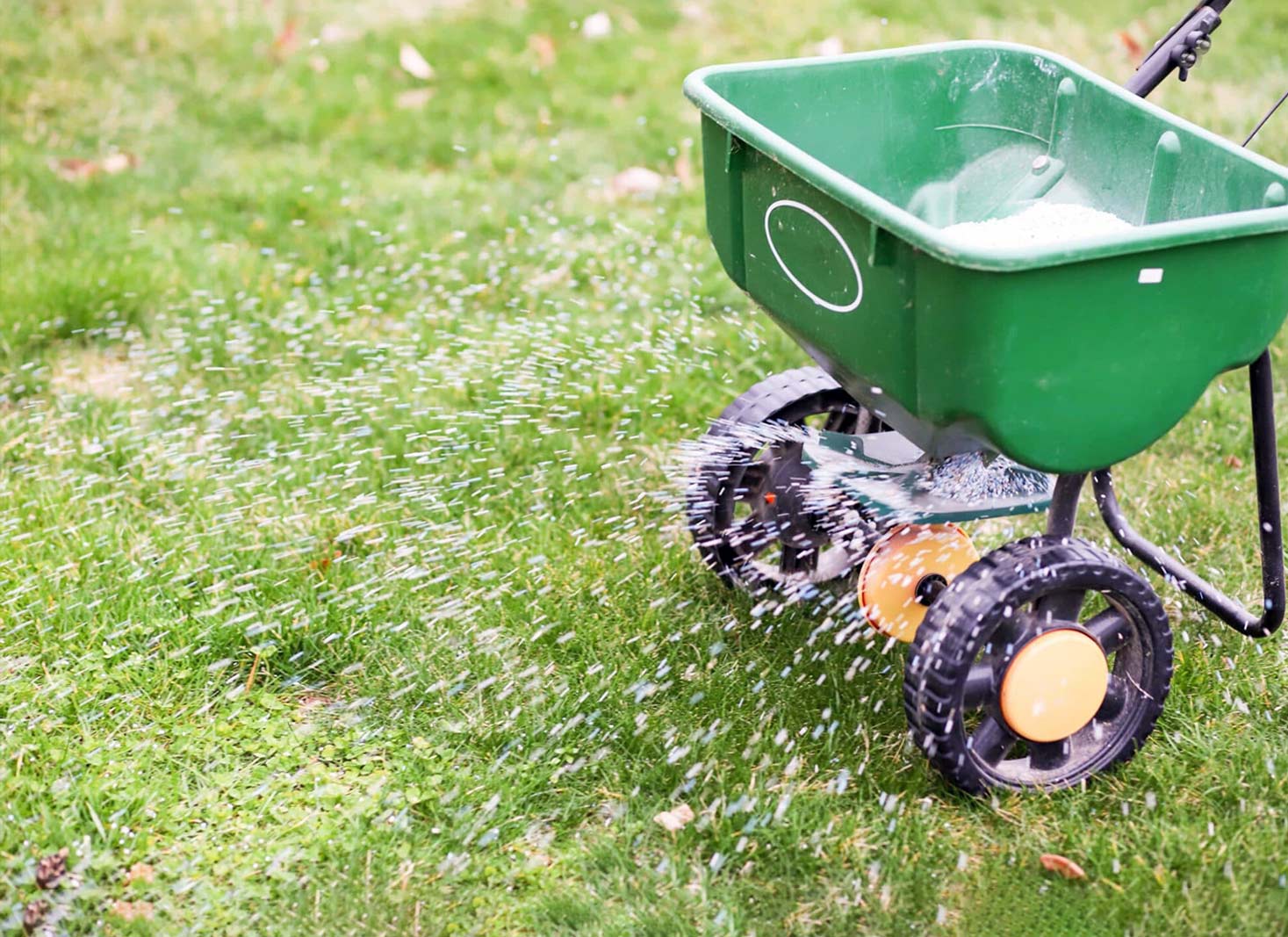
What we cover
ToggleDetermining the best time to fertilize
Fertilizing the lawn is an essential aspect of lawn care, but knowing when to fertilize is equally important.
Fertilizing at the wrong time can result in lush green grass but with shallow roots, making it more vulnerable to drought and disease. Here are some tips to help determine the best time to fertilize your lawn:
Consider the grass type
The type of grass in your lawn plays a significant role in determining the best time to fertilize.
Warm-season grasses, such as Bermuda grass and St. Augustine grass grow actively during the summer months, and the best time to fertilize them is in late spring or early summer.
On the other hand, cool-season grasses, such as Kentucky bluegrass and perennial ryegrass, grow actively during the spring and fall months, and the best time to fertilize them is in early spring and fall.
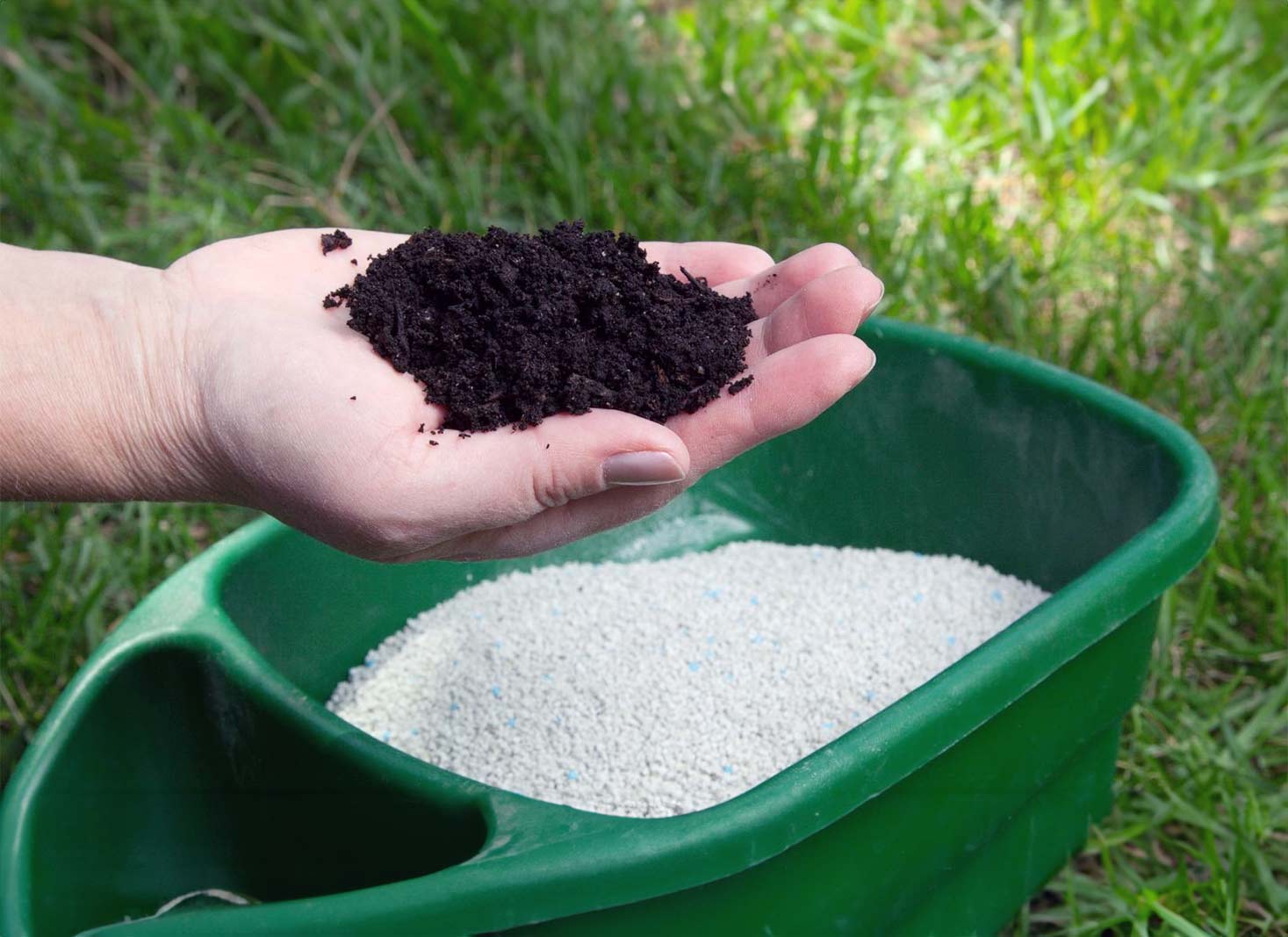
Look at the weather and climate
The weather conditions in your area also play a crucial role in determining the best time to fertilize your lawn. Avoid fertilizing during periods of drought or extreme heat, as this can cause the grass to burn and die.
Instead, fertilize when the weather is mild, and the soil is moist, which will allow the grass to absorb the nutrients effectively.
The climate of your area can also affect the timing of lawn fertilization. In regions with mild winters, such as the southern United States, fertilization can be done year-round.
In colder regions, it is best to fertilize in the fall and spring when the grass is actively growing.
Check soil condition
The condition of your soil can also affect the timing of fertilization. If your soil is nutrient-poor, you may need to fertilize more frequently to ensure that your grass is getting the nutrients it needs.
A soil test can help determine the nutrient levels in your lawn, which can help you identify the right time to fertilize.
If the soil test shows that your lawn lacks essential nutrients, such as nitrogen, phosphorus, or potassium, then it’s time to fertilize.
However, if the soil test shows that your lawn has sufficient nutrients, then you can wait until the next growing season to fertilize.
Follow a fertilization schedule
Following a fertilization schedule can help ensure that your lawn receives the nutrients it needs at the right time. Generally, it’s recommended to fertilize your lawn twice a year, once in the spring and once in the fall.
However, the frequency and timing of fertilization may vary depending on the grass type, weather conditions, and soil test results.
Seasonal fertilization schedule
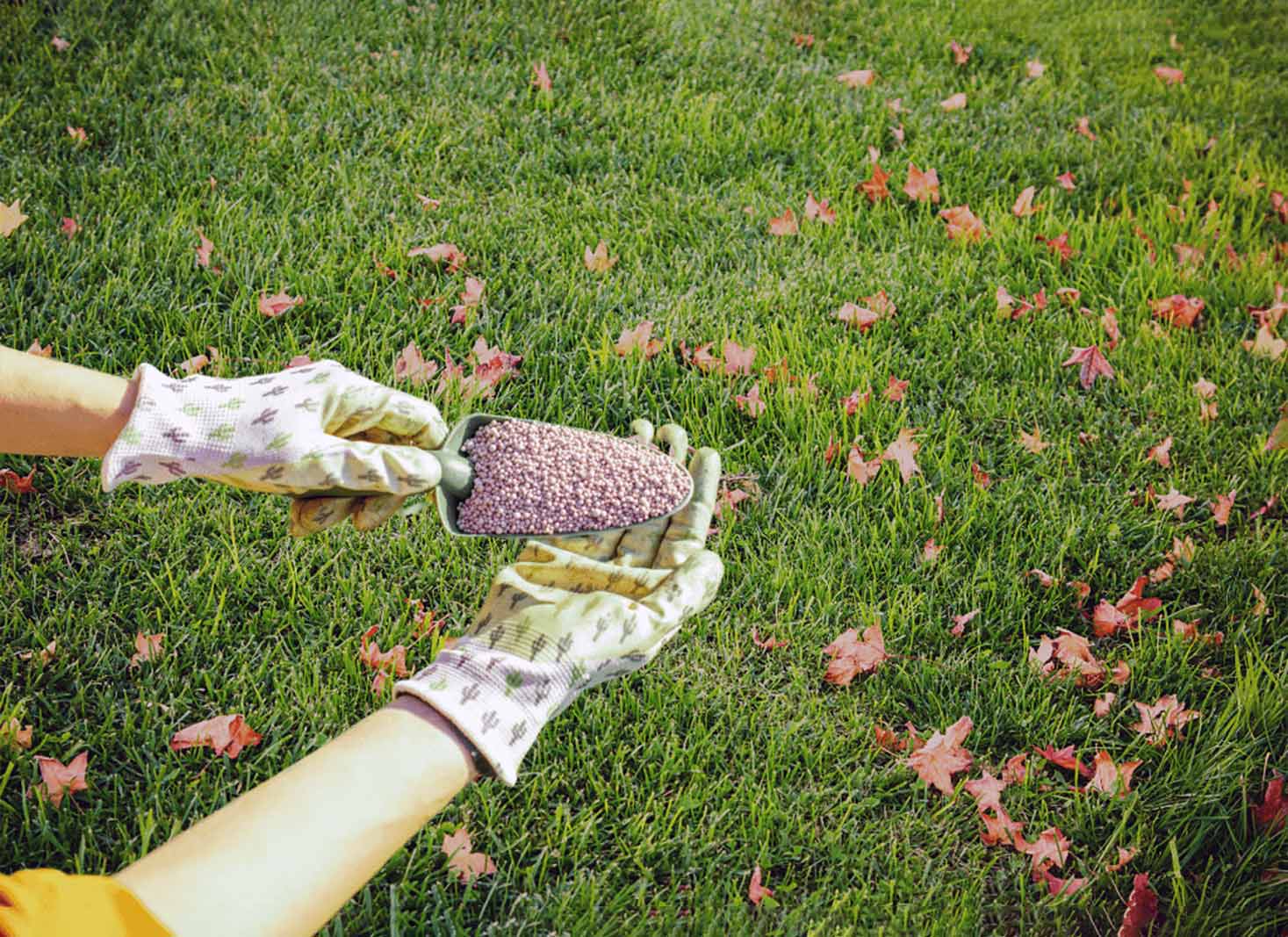
When it comes to fertilizing your lawn, timing is everything. A proper seasonal fertilization schedule can help ensure that your lawn stays healthy and green throughout the year.
Here are some guidelines for fertilizing your lawn during each season.
Spring
In the spring, it’s important to give your lawn the nutrients it needs to recover from the winter and start growing again.
Apply a fertilizer with a high nitrogen content in late spring, around April or May, when the soil temperature reaches around 55°F. This will help your lawn grow strong roots and green up quickly.
Summer
During the summer, your lawn is likely to face heat stress and drought conditions. To help your lawn withstand these conditions, apply a slow-release fertilizer in early summer, around June or July.
This will provide your lawn with the nutrients it needs to stay healthy and green throughout the summer months. Be sure to water your lawn regularly to help it stay hydrated.
Fall
Fall is the most important time of year to fertilize your lawn. This is when your lawn is preparing for winter and needs to build up energy reserves.
Apply a fertilizer with a high phosphorus content in early fall, around September or October, when the soil temperature is still warm enough to allow for root growth.
This will help your lawn store energy for the winter and promote healthy root growth.
Winter
While you may not think of winter as a time to fertilize your lawn, it can actually be beneficial to apply a winterizer fertilizer in late fall, around November or December.
This type of fertilizer is designed to help your lawn survive the winter and recover quickly in the spring. It contains high levels of potassium, which helps your lawn build up tolerance to cold temperatures and disease.
Choosing the right fertilizer
Choosing the right fertilizer for your lawn can be a daunting task, but it doesn’t have to be. The most important factor in choosing the right fertilizer is the NPK ratio. NPK stands for nitrogen (N), phosphorus (P), and potassium (K).
These are the three most important nutrients for your grass, and the numbers in the ratio tell you what percentage of each nutrient the fertilizer contains.
Different types of grass
Different types of grass have different nutrient requirements, so it’s important to choose a fertilizer that matches your grass type.
For example, cool-season grasses like Kentucky bluegrass and fescue require more nitrogen in the fall, while warm-season grasses like Bermuda grass and St. Augustine grass require more nitrogen in the summer.
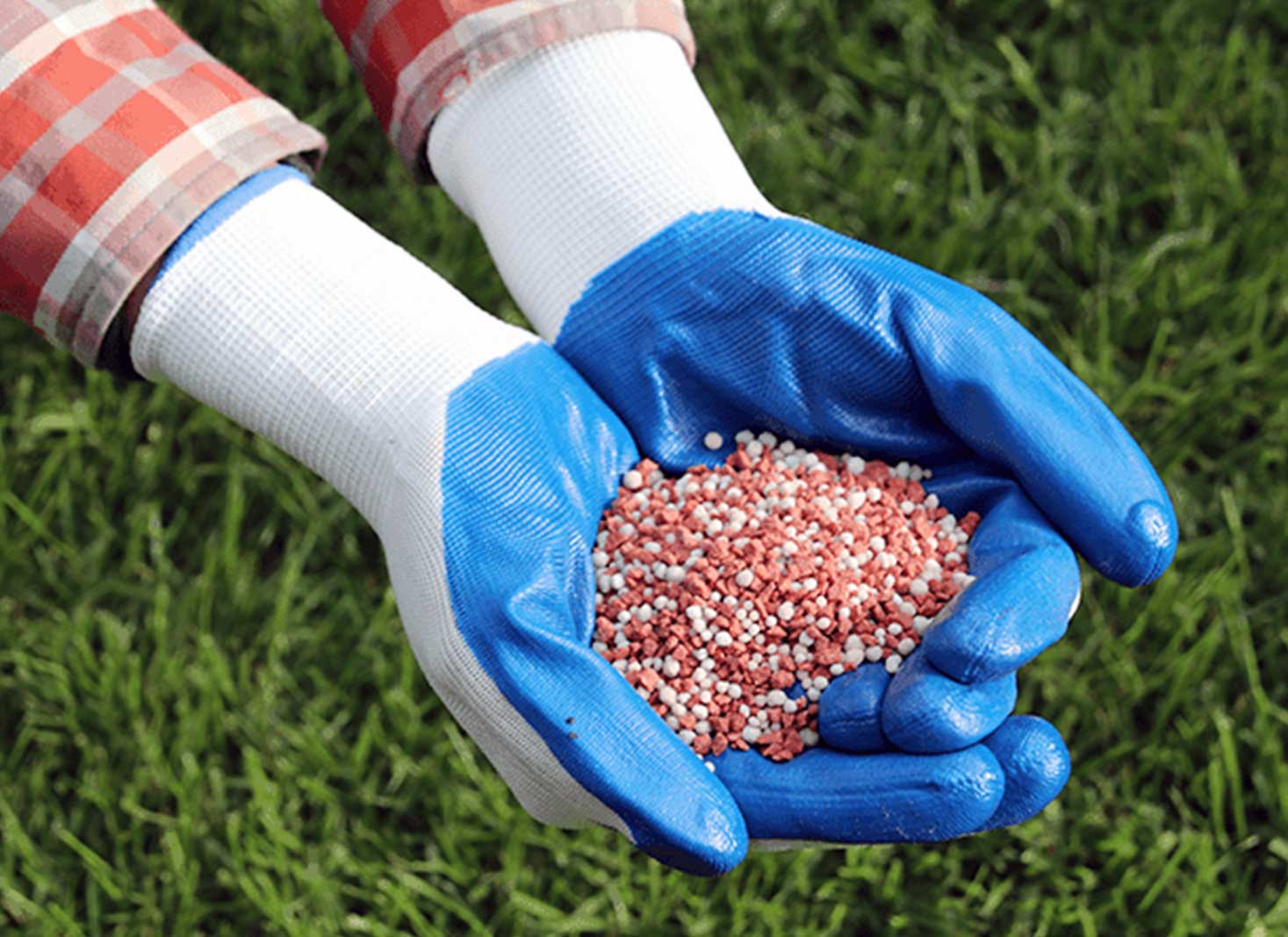
Release rate of fertilizer
It’s also important to consider the release rate of the fertilizer. Slow-release fertilizers are better for the environment because they release nutrients slowly over time, reducing the risk of runoff and leaching.
They also require fewer applications, which can save time and money.
Nutrients and micronutrients
Another factor to consider is the presence of other nutrients and micronutrients. Some fertilizers contain additional nutrients like iron, calcium, and sulfur, which can help improve the health of your lawn.
However, it’s important to avoid over-fertilizing, as this can damage your lawn and harm the environment.
When choosing a fertilizer, it’s important to read the label carefully and follow the manufacturer’s instructions. Applying too much fertilizer can burn your lawn while applying too little can result in poor growth.
Fertilizing techniques
When it comes to fertilizing a lawn, there are a few techniques that can help ensure optimal results. Here are some techniques to consider:
1. Spread the fertilizer evenly
One of the most important things to keep in mind when fertilizing a lawn is to spread the fertilizer evenly. Uneven application can lead to uneven growth, which can make your lawn look patchy and unattractive.
To ensure an even application, it may be helpful to use a spreader. There are two main types of spreaders: drop spreaders and broadcast spreaders.
Drop spreaders are ideal for small lawns, while broadcast spreaders are better for larger lawns.
2. Water the lawn after fertilizing
After fertilizing the lawn, it’s important to water it thoroughly. This will help the fertilizer penetrate the soil and reach the roots of the grass.
It’s best to water the lawn immediately after fertilizing, but if that’s not possible, aim to water within 24 hours.
3. Use the right amount of fertilizer
Using the right amount of fertilizer is crucial for achieving optimal results. Too little fertilizer can result in poor growth, while too much can burn the grass and cause damage.
The amount of fertilizer you need will depend on the size of your lawn and the type of grass you have. It’s important to read the instructions on the fertilizer package carefully and follow them closely.
4. Choose the right fertilizer
Choosing the right fertilizer is also important. Different types of grass require different nutrients, so it’s important to choose a fertilizer that is appropriate for your type of grass.
Additionally, some fertilizers are designed for specific seasons, so it’s important to choose a fertilizer that is appropriate for the time of year you are fertilizing.
5. Consider organic fertilizers
Finally, it may be worth considering using organic fertilizers. These fertilizers are made from natural materials, such as compost, and are often gentler on the environment than synthetic fertilizers.
Additionally, organic fertilizers can help improve soil quality over time, which can lead to healthier grass and a more vibrant lawn.
Common mistakes to avoid
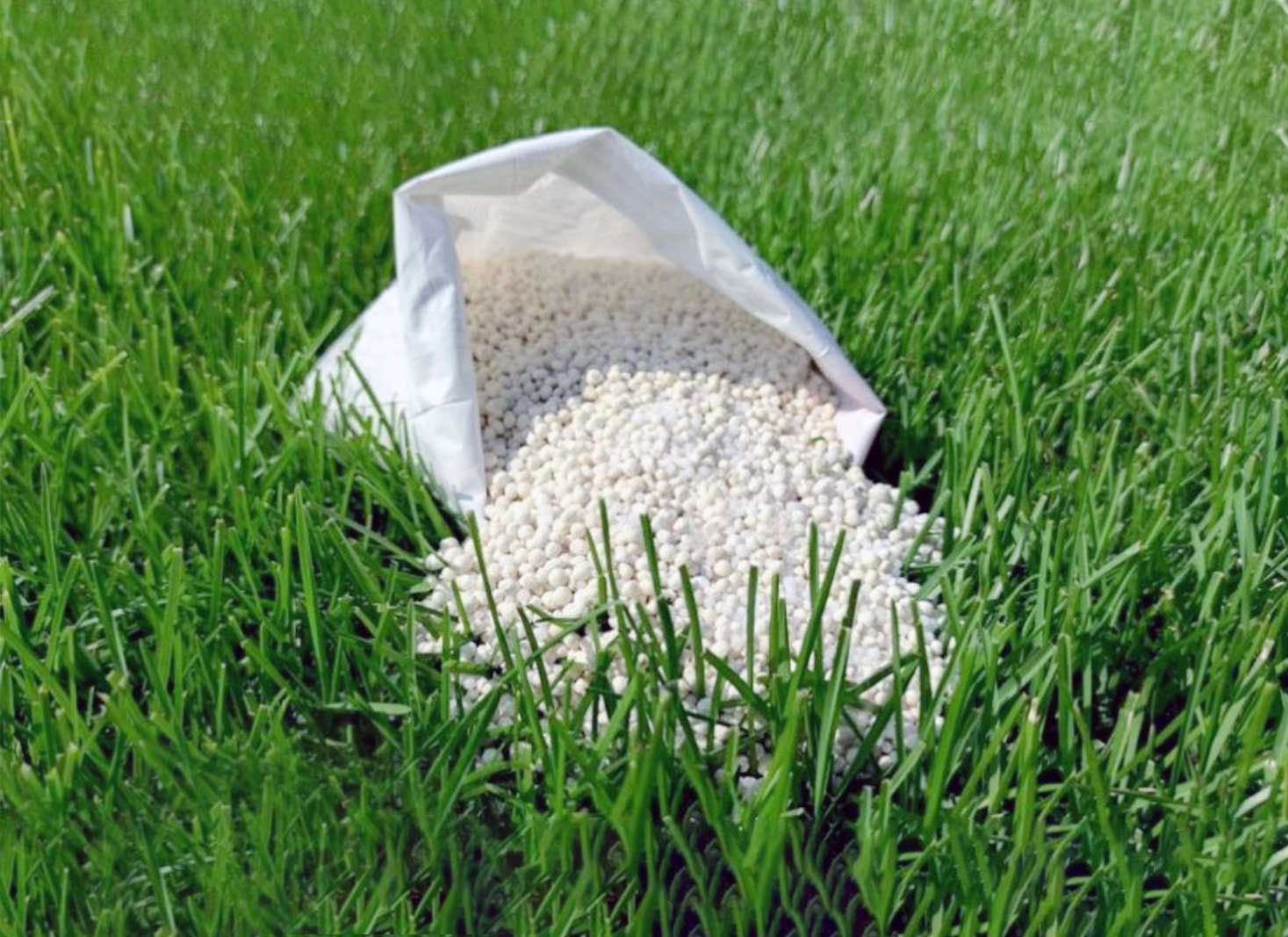
When it comes to fertilizing a lawn, there are several common mistakes that people make. Avoiding these mistakes can help ensure that your lawn stays healthy and green.
Over-fertilizing
One of the most common mistakes people make when fertilizing their lawn is over-fertilizing. Applying too much fertilizer can lead to a buildup of salts in the soil, which can damage the roots of your grass.
It can also lead to excessive growth, which can make your lawn more susceptible to disease and pests.
Fertilizing at the wrong time
Another mistake people make is fertilizing at the wrong time. Fertilizer should be applied when the grass is actively growing. Applying fertilizer during periods of dormancy or stress can be ineffective or even harmful.
Choosing the wrong type of fertilizer
Choosing the wrong type of fertilizer is another common mistake. Different types of grass require different types of fertilizer.
For example, cool-season grasses require a fertilizer with a higher nitrogen content, while warm-season grasses require a fertilizer with a higher potassium content.
Using the wrong type of fertilizer can lead to poor growth and an unhealthy lawn.
Fertilizing a wet lawn
Fertilizing a wet lawn can also be a mistake. Wet grass can cause the fertilizer to stick to the blades, which can lead to uneven distribution.
It can also cause the fertilizer to run off into nearby water sources, which can be harmful to the environment.
Ignoring soil health
Ignoring soil health is another mistake people make when fertilizing their lawn. Healthy soil is essential for a healthy lawn. Before fertilizing, it’s important to test the soil to determine its pH level and nutrient content.
This can help ensure that you’re using the right type and amount of fertilizer.
By avoiding these common mistakes, you can help ensure that your lawn stays healthy and green.
FAQ's
The best time to fertilize a lawn in Ohio is during the fall season. This is because the cooler temperatures and increased rainfall during the fall months allow the grass to absorb the nutrients from the fertilizer more effectively.
Applying fertilizer during the fall season also helps to prepare the lawn for the colder winter months.
In California, the best time to fertilize a lawn is during the spring season.
This is because the warmer temperatures and increased sunlight during the spring months encourage the grass to grow and absorb the nutrients from the fertilizer.
Applying fertilizer during the spring season also helps to prepare the lawn for the hotter summer months.
The best time to fertilize a Texas lawn is during the spring season, typically in late February or early March.
This is because the warmer temperatures and increased sunlight during the spring months encourage the grass to grow and absorb the nutrients from the fertilizer.
Applying fertilizer during the spring season also helps to prepare the lawn for the hotter summer months.
The recommended fertilization schedule for Michigan lawns is to apply fertilizer four times per year. The first application should be in the early spring, followed by a second application in late spring or early summer.
The third application should be in the fall, and the fourth and final application should be in late fall or early winter.
The Scotts fertilization program is a lawn care program that involves applying fertilizer at specific times throughout the year to promote healthy grass growth.
The program typically involves four applications of fertilizer per year, with each application tailored to the specific needs of the lawn based on factors such as grass type, soil type, and climate.
It is generally safe to fertilize a lawn four times per year, with each application spaced out by several months. Over-fertilizing a lawn can lead to issues such as nutrient runoff, which can harm the environment and nearby water sources.
It is important to follow the recommended fertilization schedule for your specific lawn type and climate to ensure healthy grass growth while minimizing environmental impact.
